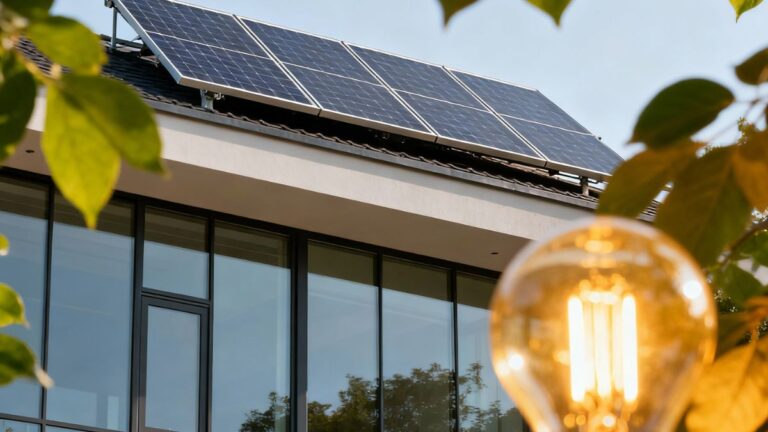
The Indian Express editorial analysis offers valuable insights into current issues affecting India, providing a critical understanding of socio-political and economic matters. For UPSC CSE preparation, such editorials are essential for developing analytical skills, enhancing understanding of governance, and applying knowledge to relevant General Studies topics. Through editorial analysis, aspirants can engage with contemporary issues, assess policy impacts, and build a nuanced perspective required for the examination.
1. Why Delhi Needs to Shift to Electric Vehicles (EVs)
Delhi’s persistent air pollution crisis and rising health-related costs make a strong case for transitioning to electric vehicles (EVs). A complete shift to EVs can bring substantial economic, environmental, and social benefits, addressing both air quality and public health concerns.
The Case for EV Adoption in Delhi
Impact of PM 2.5 Emissions
Studies show that particulate matter (PM 2.5) is a major contributor to Delhi’s air pollution. The transport sector alone accounts for 48.37 Gg of PM 2.5 emissions annually. Cars contribute 25.54% of these emissions, despite forming only 32.44% of the fleet. Commercial vehicles, though comprising just 2.56% of the fleet, contribute nearly 39% of transport-related emissions.
A reduction in PM 2.5 concentration can significantly improve public health and reduce premature deaths caused by air pollution. For example, replacing vehicles older than 15 years with EVs could cut PM 2.5 levels by 9% and healthcare costs by 6%.
Benefits of EV Transition
Reduction in Health and Economic Costs
A full transition to EVs in Delhi could lead to:
- A 40% reduction in PM 2.5 levels.
- A 25.7% decrease in mortality-related costs.
- A more than 25% decline in per capita healthcare spending.
- Savings of ₹11,000 crore annually.
Climate and Environmental Benefits
EVs do not emit harmful pollutants like NOx or secondary particulate matter, unlike fossil fuel-driven or even CNG vehicles. Transitioning to EVs would significantly improve air quality and help mitigate climate change.
Current Initiatives and Challenges
Delhi’s EV Policy
Introduced in 2020 and extended until 2025, Delhi’s EV policy provides:
- Subsidies of up to ₹30,000 for two-wheelers and ₹1.5 lakh for electric cars.
- Plans to establish 25 new charging stations across the city.
Challenges
Despite the potential benefits, several barriers hinder a complete EV transition:
- High costs: EVs remain expensive for most consumers.
- Limited infrastructure: The number of charging stations is insufficient, and charging speeds are slow.
- Environmental concerns: Battery production involves importing lithium-ion and other chemicals, raising sustainability issues.
- Low consumer awareness: Many people are unaware of the advantages of EVs or the subsidies available.
Way Forward
Enhanced Infrastructure
Expanding the charging network and investing in faster charging technologies are critical to overcoming current limitations.
Incentives for Manufacturers
Encouraging local production of batteries and EV components can reduce costs and dependence on imports, addressing environmental concerns.
Public Awareness Campaigns
Educating the public about the benefits of EVs and government subsidies can increase adoption rates.
Gradual Transition
Initiatives like phasing out vehicles older than 15 years or prioritizing EV adoption in commercial fleets can create a structured pathway toward full transition.
Conclusion
Delhi’s pollution crisis demands urgent and sustained action. A shift to EVs offers a viable solution with far-reaching benefits, including reduced air pollution, improved public health, and lower economic costs. While challenges remain, targeted policies, infrastructure development, and public engagement can pave the way for a cleaner, healthier, and more sustainable Delhi.
Source: IE
2. Why India Needs Harmony to Shore Up Its Economy
As 2025 begins, India stands at a crucial juncture. The past year, marked by political upheavals and economic challenges worldwide, has highlighted the importance of stability and harmony for sustained economic growth. With the Indian economy showing signs of resilience, the focus must now shift toward consolidating gains and addressing lingering challenges.
Global Instability: Lessons for India
The “super year” of elections in 2024 brought significant changes across the globe, from leadership shifts to political instability:
- Bangladesh: Political turmoil led to the fall of Sheikh Hasina’s government.
- South Africa: The dominance of the African National Congress ended, forcing a coalition government.
- Europe: Right-wing parties gained traction, creating political instability in France, Germany, and the UK.
- United States: Donald Trump’s return as president introduced uncertainties in global politics.
Amid this backdrop, India managed to navigate political challenges. Although the BJP lost its parliamentary majority, it retained power with the help of allies and followed up with decisive electoral wins in Haryana and Maharashtra.
India’s Economic Growth: A Bright Spot
India’s economy has rebounded strongly post-pandemic, with the World Bank projecting a 7% GDP growth rate for 2025. Key economic indicators underscore this progress:
- Debt-to-GDP Ratio: Declined from 83.9% to 82%.
- Current Account Deficit: Maintained at a low 1–1.5% of GDP.
- Global Ranking: India is on track to become the third-largest economy, likely crossing the $5 trillion mark by 2027.
However, challenges like unemployment, stagnant exports, and low private sector participation remain pressing concerns.
The Role of Social and Political Harmony
Prime Minister Narendra Modi’s recent gestures, such as attending Christmas Mass and offering a chadar at Ajmer Sharif Dargah, emphasize the importance of fostering social and religious harmony. A stable socio-political environment is essential for:
- Encouraging Private Investment: Investors seek predictable and stable conditions.
- Sustained Economic Growth: Historical examples from China and Singapore show how political stability drives long-term growth.
- Enhancing Social Cohesion: Harmony ensures inclusive growth and minimizes disruptions.
Addressing Challenges and Opportunities
To capitalize on its economic momentum, India must focus on:
- Boosting Private Sector Participation: Incentives and reforms are needed to encourage investment.
- Enhancing Export Competitiveness: Diversifying export markets and improving product quality are key.
- Investing in Infrastructure: Continued public spending can address unemployment and create a multiplier effect.
- Promoting Social Harmony: Reducing polarization and fostering unity will create a conducive environment for growth.
A National Resolution for Economic Growth
India has historically struggled to maintain consistent high growth rates. Unlike China, which achieved nearly three decades of 10% annual growth, India has rarely surpassed 9% growth since Independence. The new year offers an opportunity to declare economic growth as a national priority, setting aside domestic disputes to focus on collective progress.
By learning from global experiences and leveraging its inherent strengths, India can achieve its economic ambitions. Stability and harmony are not just desirable but essential to realizing the vision of a $5 trillion economy.
Source: IE
Also Read: Indian Express Editorial Analysis- January 03, 2025
3. Fertilizer subsidies: Let the market decide
The weakening rupee, which has slipped from 83.8 to 85.8 against the dollar in recent months, poses significant challenges for India’s fiscal management. This shift highlights the need for a re-evaluation of policies that have historically kept fertiliser and fuel prices artificially low. With the global economic landscape evolving, it is time to consider letting the market play a more decisive role in determining fertilizer pricing.
The Cost of Subsidies in a Volatile Environment
India’s heavy reliance on imports for key inputs like fertilizers exposes it to global price fluctuations and exchange rate risks. For instance:
- Di-Ammonium Phosphate (DAP): Current import prices exceed $630 per tonne. A mere Rs 2-to-the-dollar depreciation increases shipment costs by Rs 1,260 per tonne.
- Government Subsidies: While the government has extended a special subsidy of Rs 3,500/tonne on DAP, it is insufficient to offset the combined effects of rising global prices and rupee depreciation.
Fertilizer companies, reluctant to import at elevated costs, face uncertainty about whether they can pass these costs to consumers. This leaves the government with two unpalatable choices: allowing price hikes or shouldering an even higher subsidy burden.
The Problem with Artificial Pricing
For years, an overvalued rupee masked the real costs of subsidies:
- Artificially Low Prices: Subsidized prices kept fertilisers affordable for farmers but discouraged efficiency in resource use.
- Dependence on Imports: The reliance on cheap imports stifled efforts to develop robust domestic supply chains.
- Unhedged Foreign Exposures: Firms borrowed in dollars without adequate exchange risk coverage, exposing them to currency volatility.
These policies, while politically expedient, are becoming economically unsustainable.
Why the Market Should Decide
Letting the market determine prices could yield several long-term benefits:
- Encouraging Efficiency: Market-driven pricing incentivizes optimal fertilizer usage and reduces wastage.
- Boosting Domestic Production: Higher MRPs could spur investment in domestic fertilizer manufacturing, reducing reliance on imports.
- Mitigating Fiscal Strain: Lower subsidies would free up resources for other critical sectors like healthcare and education.
- Promoting Risk Awareness: Companies and policymakers would be more cautious in managing foreign currency exposures.
Transitioning to Market Pricing
A phased approach to deregulation could balance the needs of farmers, consumers, and the economy:
- Gradual Price Adjustments: Increase MRPs incrementally to avoid a sudden burden on farmers.
- Targeted Support: Replace blanket subsidies with direct benefit transfers (DBTs) to support marginal and small farmers.
- Incentives for Domestic Production: Encourage investments in indigenous fertilizer production through tax breaks and R&D grants.
- Strengthening Supply Chains: Develop robust logistics and warehousing to minimize post-production losses and ensure timely availability.
Conclusion
The weakening rupee serves as a timely reminder that policies reliant on artificial controls are unsustainable in a dynamic global environment. Allowing the market to play a more significant role in fertilizer pricing is not just an economic necessity but also a step toward long-term sustainability. A pragmatic approach, balancing reforms with adequate safeguards for vulnerable sections, will ensure a smoother transition to a resilient and self-reliant fertilizer sector.
Source: IE
Also Read: The Hindu Editorial Analysis- Jan 04, 2025
Disclaimer:
This analysis is based on the editorial content published in Indian Express and is intended solely for informational and educational purposes. The views, opinions, and interpretations expressed herein are those of the author of original article. Readers are encouraged to refer to the original article for complete context and to exercise their own judgment while interpreting the analysis. The analysis does not constitute professional advice or endorsement of any political, economic, or social perspective.
Follow Fusion IAS


